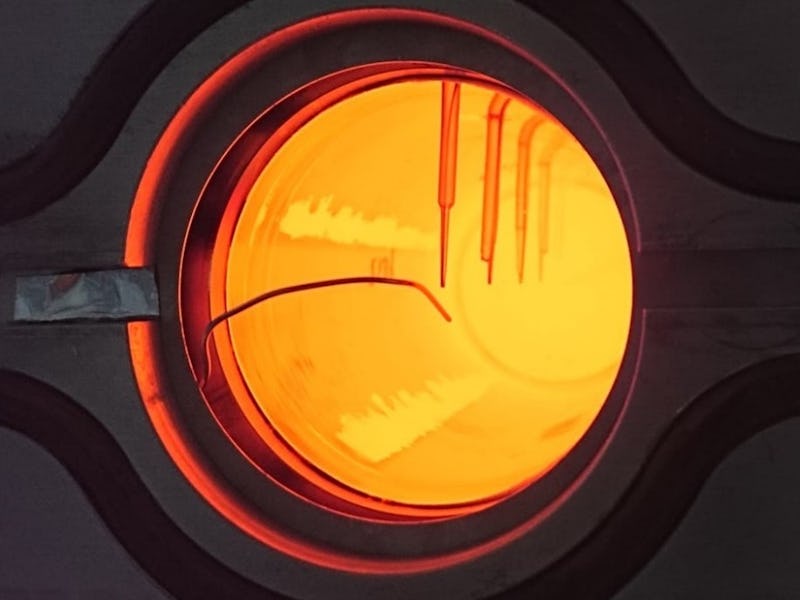A Radical New Experiment Used Synthetic Quartz To Capture Artificial Heat
The novel feat shows that channeling enough solar energy can generate industrial-grade heat.

Synthetic quartz may help reduce the carbon footprint of industries that produce things like glass, steel, and cement.
In recent experiments, Federal University of Technology, Zurich, engineer Emiliano Casati and his colleagues used synthetic quartz rods to capture solar energy and transfer it, in the form of heat, to another material.
The researchers started with a foot-long rod of synthetic quartz, with a disk of opaque silicon attached to the far end. Next, they shined an intense beam of simulated solar energy onto the other end.
The end that caught all that solar energy heated up, but less than the researchers expected: about 1100 degrees Fahrenheit. But at the far end of the rod, away from the light, the silicon disk got even hotter: more than 1900 degrees Fahrenheit. Instead of just heating up the quartz rod, energy from the simulated sun had (mostly) passed through the quartz and been absorbed by the silicon disk at the other end.
Casati and his colleagues say their work could one day help industries produce steel, glass, and cement with solar energy instead of fossil fuels. Those materials are the backbone of modern infrastructure, but making them requires intense heat (more than 1800 degrees Fahrenheit). The power to generate that heat accounts for about 25 percent of the world’s energy consumption, and at the moment, nearly all of it comes from burning fossil fuels — which is a big problem.
“Any serious plan to counteract climate change must therefore tackle the challenge of decarbonizing industrial heat as well,” wrote Casati and his colleagues in their recent paper in the journal Device.
Shedding Light on Carbon Reduction
When sunlight shines on something opaque, like a rock, the material’s surface absorbs some of the energy as heat. That heat gets transferred through the rest of the rock in a process called conduction, where hot molecules vibrate faster than cold ones. When a jittery hot molecule bumps into its cooler neighbor, the neighbor gets all riled up, too. This isn’t a very efficient way to transfer heat, though, so the rock’s sunlit surface tends to stay warmer than its middle.
Translucent materials, like quartz or even some plastics, transfer heat differently than opaque ones. As a result, write Casati and his colleagues, “it is possible to achieve temperatures that are higher in the bulk of the material than at the surface exposed to solar radiation. This phenomenon is referred to as thermal trapping.”
In Casati and his colleagues’ experiment, about 90 percent of the heat energy reached the silicon disk at the end of their foot-long quartz rod, which is why the disk was hotter than the end of the rod that was actually pointed at the simulated Sun. With some refinements, Casati and his colleagues hope thermal trapping can enable heavy industry to harness the Sun’s power to generate the tremendous heat needed for steel smelting, cement kilns, and glass-making.
To be fair, the light Casati and his colleagues shined on the end of their quartz rod was about 136 times as much energy as actual Sunlight. In other words, it took extremely concentrated energy to make this work. They used a machine called a high-flux solar simulator, or HESS, which mimics the effects of a different machine that uses mirrors to concentrate sunlight onto a single point.
Earlier experiments had used a translucent plastic box to test thermal trapping, which worked, though at much lower temperatures. Casati and his colleagues chose quartz because it can transfer the much larger amounts of heat needed for industrial uses. At the moment, they’re testing other materials and trying to refine the effect, and it will probably be a while before we see buildings made with steel smelted with solar-generated heat.